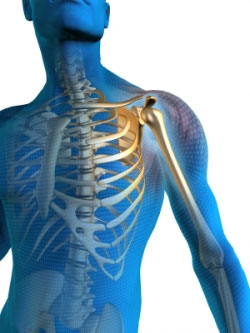Frozen Shoulder Specialist

Back and Active is a Frozen Shoulder NW3 Specialist Clinic. Damien and Camilla were two of the first licensed practitioners in the UK having completed the Neil-Asher Technique® for Frozen Shoulder. Damien Nicol worked alongside Simeon Neil-Asher for one year.
What is the Neil-Asher Technique® and how does it work?
The Neil-Asher Technique® is a hands-on-technique using osteopathic methods thus utilising the body's own healing mechanisms. No drugs or surgery are used. The Osteopathic techniques including a sequence of trigger points, neural reflexes, stretches and manipulations to the shoulder joints and soft-tissues in a specific and unique sequence. Traditionally therapists use similar techniques together with attempting to improve the shoulders range of movement by forcing it through the blockage. Neil-Asher Technique® practitioners believe this can make things significantly worse thus we use this unique technique of Cortex-Neuro-Somatic Programming® (CNSP®).
Cortex-Neuro-Somatic Programming® that influences a neuro-dynamic change is through triggering a specific sequence of reflexes at the level of the somatosensory cortex and the spinal cord. It is a means of tricking the brain into repairing the injury by attending to both pain and stiffness. Firstly its aims to drastically decrease the pain, by treating the swelling around various shoulder muscles and their tendons e.g. the biceps tendon. Next, the technique seeks to quickly defrost and improve shoulder range of movement by activating a unique sequence of reflexes hidden within the muscles. One reflex is stimulated against another in an arranged sequence. The arm is not forced however we will apply pressure which can be relatively painful at times.
Evidence-Based Technique
The Neil-Asher Technique®™ is evidence-based. In a Randomized Placebo Controlled Trial, conducted in association with the Rheumatology Research Unit at Addenbrookes hospital (Cambridge, UK), the technique was compared to a standard physiotherapy protocol (with exercise) and placebo for the treatment of frozen shoulder syndrome (British Journal of Rheumatology. 42 (Suppl 1). Article 418 BHPR p.146. 2003).
It showed that an 80% reduction in pain (the largest clinical change in reducing both shoulder pain and disability, a significantly increase in range for motion, power and strength compared the physiotherapy treatment and placebo.
Call Back & Active Osteopths, Belsize Park NW3 on 020 7586 6022 to Book Your Consultation Now with our Frozen Shoulder Specialist.








